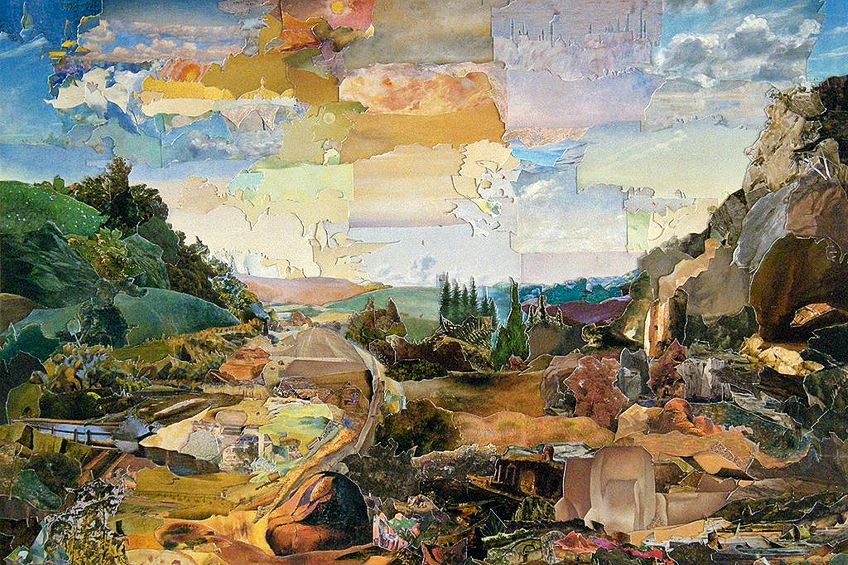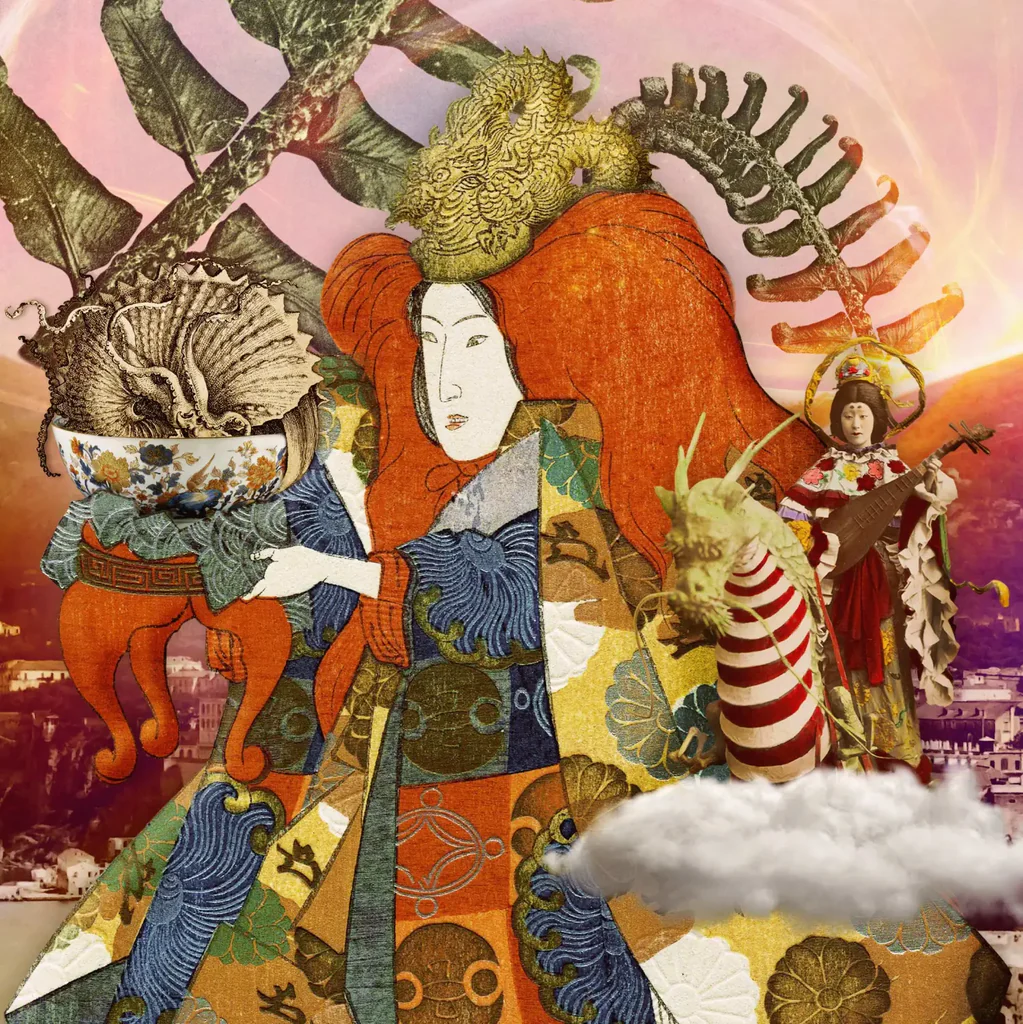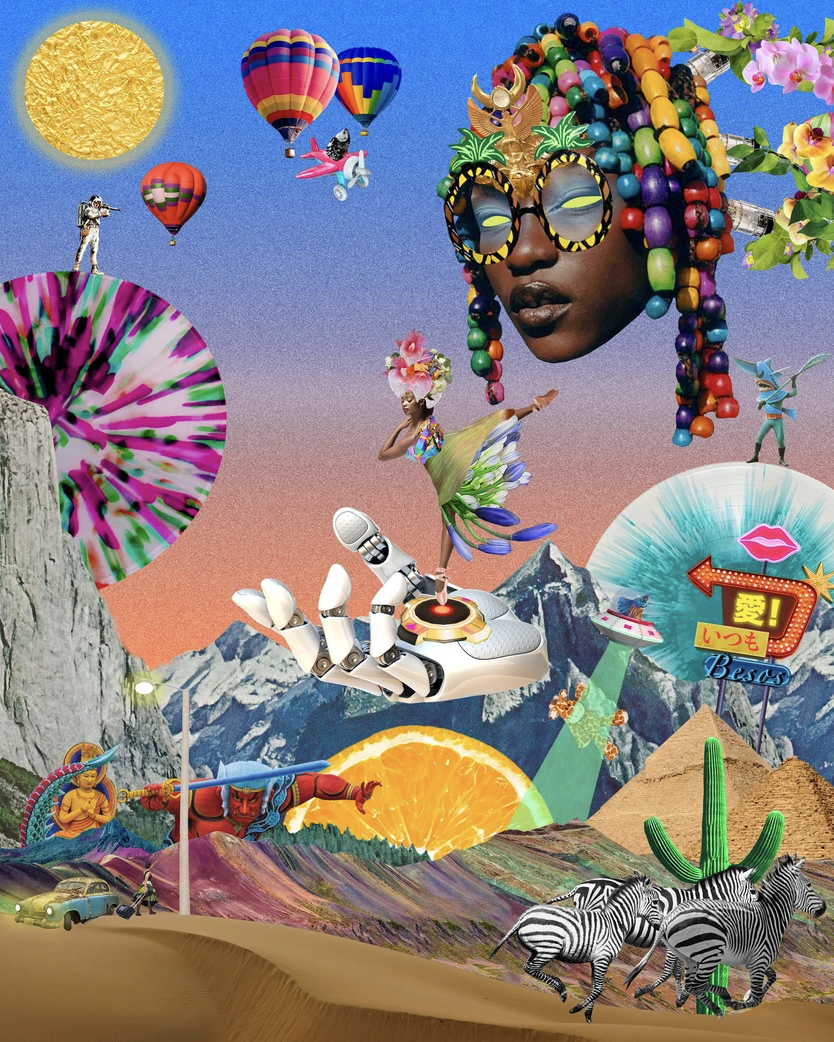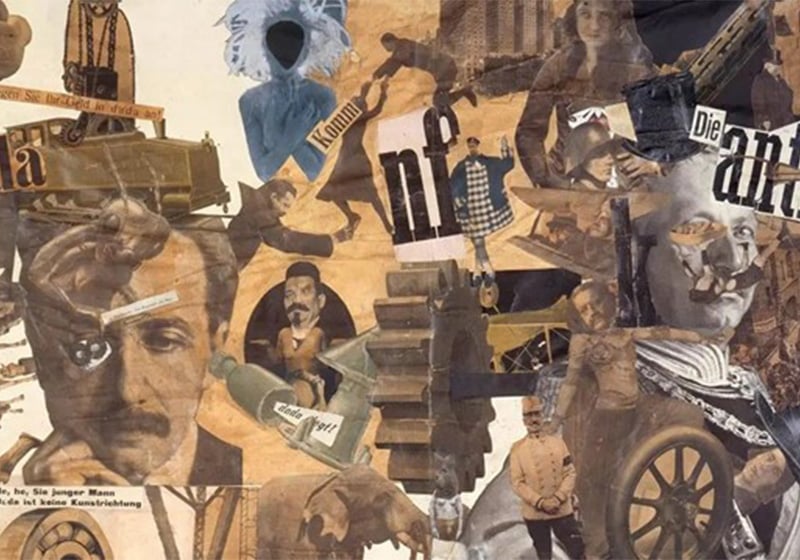Have you ever stopped to think about how mixed media art has played a pivotal role in creative expression? From its early days, collage techniques have journeyed through various visual arts movements, showcasing the beauty that comes from combining different materials. Artists initially ventured into this realm by using scraps and found objects, transforming them into something entirely new.
This method thrived during periods of societal change, echoing shifts in culture and dialogue.
As creators began to embrace diverse themes, the perception of collage art evolved from a simple craft to a respected fine art form. Each piece invites viewers to delve deeper, revealing stories layered within the intricate interplay of collage techniques and mixed media, showcasing the beauty of visual arts and assemblage in paper art.
Origins Of Collage Techniques
Have you ever thought about how a simple piece of paper can turn into a dynamic storytelling tool? This art form invites you to dive into layers of imagery, where every cut and paste brings new ideas to life. Its roots can be traced back to ancient cultures that brilliantly combined images to narrate their tales.
For instance, you can find early examples in Egyptian papyrus scrolls, where artists skillfully wove visuals together to create complex narratives.
Over the years, this way of visual storytelling continued to evolve, picking up steam in the early 20th century.
During this period, movements like Dadaism and surrealism began to shake up the traditional art scene. Innovative creators pushed boundaries, exploring the realms of cut and paste, surrealism, modernism, Dadaism, and visual storytelling.
Key Art Movements In Collage
Over the years, the evolution of collage reflects a captivating journey through various art movements. Each significant shift brings a fresh lens through which we can appreciate contemporary works.
For instance, the dynamic energy of Futurism introduced an exhilarating pace, while Cubism offered fragmented perspectives, challenging our conventional views.
Surrealism, with its dream-like imagery, crafted visual narratives that continue to intrigue us.
Then we have Pop Art, which playfully critiqued consumer culture and turned everyday objects into powerful statements. Each of these creative compositions not only tells a story but also represents a unique aesthetic innovation tied to its time and influences
the Evolution of Collage
- Futurism emphasized speed and modernity, influencing the dynamic composition of collages.
- Cubism introduced fragmented forms, encouraging viewers to see multiple perspectives simultaneously.
- Surrealism’s exploration of the subconscious created visually rich narratives that engage the imagination.
- Pop Art’s use of commercial imagery challenged traditional notions of art and highlighted consumer culture.
Influences Of Dadaism And Surrealism
Art has an incredible way of evolving, and two movements truly shook things up by redefining how artists think about their creations. Absurdity and whimsy became central themes, forcing everyone to rethink what art could be.
Dadaism sprang up as a bold response to the chaos of World War I, challenging traditional norms and advocating for randomness in art.
Visionaries like Marcel Duchamp and Hannah Höch advanced the game, utilizing photomontage techniques to create works that were as provocative as they were playful.
Surrealism took it a step further, diving deep into the realm of dreams and the unconscious. Artists such as Max Ernst and Salvador Dalí transformed the visual landscape with their uncanny imagery, engaging viewers in a dialogue that felt both familiar and otherworldly. The echoes of these artistic techniques resonate through the diverse expressions of contemporary collage, analog collage, digital collage, and photomontage, reflecting the complexities of our material culture.
Exploring Collage Materials And Textures
The world of collage is like a treasure chest waiting to be explored. Different types of paper, from vintage books to colorful maps, can enhance your visual rhythm in unexpected ways.
Nature offers its own bounty, too—think about incorporating leaves or grains of sand to create tactile elements that spark curiosity.
The juxtaposition of smooth and rough materials not only adds depth but also stirs emotions in those who view your work.
Why not mix in some unconventional pieces, like metal scraps or found objects? This bricolage approach opens up a realm of creativity where your imagination can truly run wild. So, embrace the adventure of experimenting with diverse combinations and adhesives, and let your unique story unfold through your art. As one delves deeper into art history and cultural commentary, the interplay of visual rhythm, juxtaposition, and bricolage reveals the intricate layers of meaning that transcend mere aesthetics.
| Art Element | Description |
|---|---|
| Visual Rhythm | Enhances the overall aesthetic through the use of varied paper types and textures. |
| Juxtaposition | Combines smooth and rough materials to create depth and evoke emotions. |
| Bricolage | Encourages the use of unconventional materials, allowing for creative exploration. |
| Tactile Elements | Incorporating natural items like leaves or sand to engage viewers’ senses. |
The Role Of Assemblage In Art
Art has a beautiful way of blending the mundane with the imaginative, taking everyday items and giving them new life. By incorporating found objects, artists weave together unique narratives, inviting viewers to explore unexpected stories.
Each layer adds texture and depth, creating a visual experience that encourages curiosity.
Imagine a piece formed from remnants of daily life—a bottle cap here, a scrap of paper there.
Together, these elements spark emotions and ignite our thoughts, pushing the boundaries of visual aesthetics. As we dive deeper into the world of collage materials and textures, we uncover how these methods shape our understanding of art’s evolution, especially as we transition to explore modernism in collage art
Understanding Modernism In Collage Art
Collage art truly transformed when modern influences stirred creativity and opened up new avenues. With modernism came an exciting range of collage materials, inviting artists to blend diverse textures and shapes.
The vibrant interplay of movements like Surrealism and Cubism inspired creators to embrace visual experiments that pushed the envelope of storytelling.
Techniques such as layering and the cut-up method mirrored the chaotic nature of life, allowing for deeper narrative art exploration.
Visionaries like Hannah Höch and Kurt Schwitters led the charge, redefining how stories could be told through innovative styles. Today, the legacy of modernism lives on, motivating contemporary collage artists to explore uncharted territories and redefine their craft. Just as assemblage once made an impact, the digital age now invites collage artists to explore visual experiments with narrative art, using an array of collage materials and cultural artifacts.
| Influential Movements | Key Techniques | Notable Artists |
|---|---|---|
| Surrealism | Layering | Hannah Höch |
| Cubism | Cut-up method | Kurt Schwitters |
| Modernism | Visual experiments | Contemporary collage artists |
How Digital Collage Impacted Visual Storytelling
Once upon a time, visual storytelling was often linear and predictable. Now, with the innovative blend of art theory and technology, artists are crafting narratives in vibrant, layered formats.
Tools like Photoshop and Procreate have unleashed a wave of creativity, making it easier to manipulate images and explore textures.
This recontextualization of images allows for multifaceted narratives that can evoke different emotions and thoughts.
You might notice conceptual art and photography merging in unexpected ways, resulting in pieces that challenge traditional perspectives. This evolution has expanded audiences, as online platforms empower artists to share their work widely, fostering a vibrant community.
Digital collage stands out as a powerful medium, offering a unique approach to conveying complex ideas and emotions that resonate deeply with viewers.
Evolution Of Collage Culture And Practices
Think of collage as a playground for creativity, where artists take bits and pieces from various sources to craft something fresh and engaging. It’s not just a simple craft; the artistic techniques involved have undergone remarkable transformations over time.
Dive into any collage exhibitions, and you’ll be struck by how these practices have adapted and evolved, reflecting shifts in society and culture.
With every approach, from traditional paper collage to innovative mixed media techniques, the scope for expression continues to grow, inviting viewers to connect with the work in personal ways.
The way artists manipulate textures and layers ensures that the art form remains vibrant and relevant, resonating with contemporary audiences.
Tracing back through history, collage emerged during a thrilling period when artists were eager to push artistic boundaries. Movements like D draw inspiration from diverse heritage and employ collage exhibitions, artistic techniques, assemblage art, and mixed media techniques to create innovative expressions.
Collage Art
- Collage is a versatile art form that allows artists to combine various materials and techniques for creative expression.
- The evolution of collage reflects significant cultural and societal changes throughout history.
- Artists utilize mixed media techniques to enhance the depth and texture of their works, making them more engaging.
- Collage exhibitions showcase the innovative approaches artists take, inviting personal connections with viewers.
Conclusion
Taking a moment to dive into the world of collage art can really showcase its vibrant journey and visual impact throughout history. This art form has evolved tremendously, blending techniques and ideas from various cultures that create a unique tapestry of expression.
Each piece has its own narrative, with visual exploration serving as a captivating element of its allure.
As we look ahead, the reinterpretation of collage promises to unveil even more innovative expressions.
What are your thoughts on this? How might you infuse your personal style into this dynamic realm? Remember, every artist contributes a distinct perspective to the rich tapestry of collage culture.
Originally posted 2024-07-14 11:38:48.



